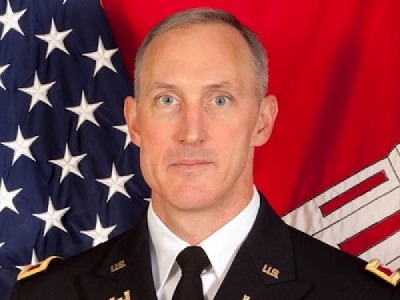
Posted on November 3, 2016
By Jason Kirk, news-press.com
The fiscal year for the U.S. Army Corps of Engineers Jacksonville District ended on Sept. 30 and it was a year in which our Team of Professionals, alongside our partners, achieved on-the-ground benefits to restore America’s Everglades.
The $127 million federal investment in fiscal year 2016 towards Everglades restoration provided essential funding to award critical construction contracts and to design and plan for future increments of restoration. For construction efforts alone, we invested $96.5 million in our Everglades projects.
The entire Everglades ecosystem operates as a whole; progress made in each respective areas builds off each other to deliver essential benefits to America’s Everglades. This connectivity starts north of Lake Okeechobee, the liquid heart of the Everglades, and moves all the way south to Florida Bay.
North of Lake Okeechobee, ongoing efforts will improve conditions north of —and within — the lake. We awarded one of three remaining construction contracts for Kissimmee River Restoration this past year. This project will restore approximately 44 miles of the historic Kissimmee River, restore more than 40 square miles of floodplain, and slow the flow of water into Lake Okeechobee. We also initiated the Lake Okeechobee Watershed project, which will further improve conditions north of the lake and enhance system-wide operational flexibility.
East and west of Lake Okeechobee, ongoing efforts will improve conditions in coastal estuaries and tributaries. Construction of much-needed storage is underway at the Indian River Lagoon-South C-44 Reservoir and Stormwater Treatment Area project on the east coast and the C-43 West Basin Storage Reservoir project on the west coast. This past year, we broke ground on the largest component of the C-44 project, the 3,400-acre reservoir. As a result of our essential partnership with the South Florida Water Management District (SFWMD), all the C-44 project components are currently under construction or complete. This partnership also enabled the SFWMD to initiate the first phase of construction on the C-43 Reservoir project. Together, these projects will provide over 220,000 acre-feet of water storage.
Progress continues on developing the final report for the Loxahatchee River Watershed Restoration project, which will improve conditions in the Loxahatchee River’s northwest fork. We also initiated the Western Everglades Restoration Project, which aims to restore the quantity, quality, timing and distribution of water within the western Everglades.
Currently pending congressional authorization, the Central Everglades Planning Project (CEPP) will construct conveyance features needed to send additional water south from Lake Okeechobee. It will also deliver more than 200,000 acre-feet of water south from the lake into Everglades National Park. Congressional authorization will make CEPP eligible for congressional appropriations.
South of Lake Okeechobee, ongoing efforts will send additional water south to Everglades National Park, Florida Bay and Biscayne Bay. This past year we awarded two of three remaining construction contracts for the C-111 South Dade project. We’re also finishing construction on the Modified Water Deliveries project. Combined, these projects put the necessary infrastructure in place to send larger quantities of water south on a long-term basis. We awarded one of three remaining contracts for the Biscayne Bay Coastal Wetlands project, which will deliver much-needed freshwater to Biscayne Bay. Additionally, the emergency deviation implemented this past year helped to alleviate high water levels within the system and deliver additional water to the Park.
We will keep momentum going in fiscal year 2017. We started this year with a visit from our Chief of Engineers Lt. Gen. Todd Semonite who appreciates the important collaborative work we’re doing to restore this complex ecosystem and recognizes our strong federal-state partnership is critical to maintaining momentum. We applaud our partners’ efforts, including the Department of the Interior breaking ground on additional Tamiami Trail bridging and SFWMD’s continued progress on Restoration Strategies. Alongside our partners, with valuable input from multiple stakeholders, we developed the Integrated Delivery Schedule (IDS). It’s our Everglades restoration roadmap—a living document with flexibility to adjust as conditions change.
We are encouraged by the progress made to date and our Corps team is absolutely committed to maintaining momentum on our important work to restore and preserve America’s Everglades for future generations.
Source: news-press.com





